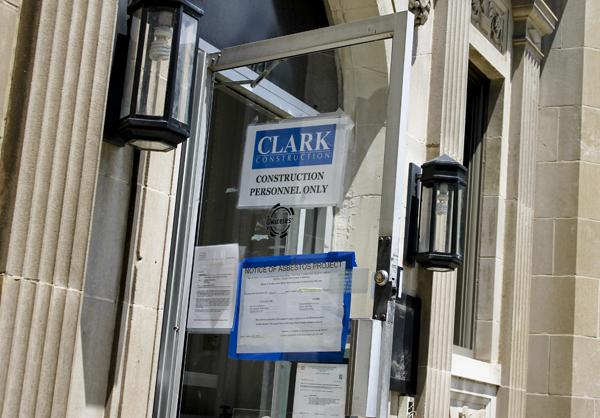
GW is cleared to demolish three residence halls to make way for the $130 million “superdorm,” a D.C. agency decided last week.
The D.C. Department of Consumer and Regulatory Affairs issued permits last week authorizing the University to raze in the interiors of Crawford Hall, The Schenley and The West End, retaining nothing but the buildings’ historical facades.
The residence hall, which will house about 900 sophomores and juniors starting in 2016, will allow GW to expand its campus footprint by mandating on-campus housing for juniors starting with the Class of 2018. The “superdorm” will also include open study space, as well as shops and restaurants.
The University secured the permits for the demolition after overcoming a political hurdle this month. Foggy Bottom neighbors and local officials had tussled with GW over the closure of the public alleyway that sits in between the historical residence halls – a $2.8 million piece of land that University officials said they already acquired from the 2007 campus plan.
The D.C. Council unanimously approved the University’s application to close the public alleyway on July 10, but only after neighborhood leaders unsuccessfully petitioned the governing body to deny the University’s request.
In May, the Foggy Bottom and West End Advisory Neighborhood Commission sought to leverage the rights over the public alleyway to coax GW into contributing $700,000 toward constructing a second entrance to the Foggy Bottom Metro station.
While pledging to “leverage additional funds” to build a second entrance for the Metro stop, Ward 2 D.C. Council member and 2014 mayoral candidate Jack Evans thwarted the ANC’s efforts at the council’s July 10 meeting.
“I believe that this can be accomplished through a joint effort of everyone in the community, the University and other businesses,” Evans said. “That is the approach I will take.”
Construction crews began work this summer on the residence halls, which are set for demolition by late 2013.
The University will connect the three buildings into one by adding a 12-story, modern infill. The residence halls were built during the 1920s and deemed historic in 2007 when the University created its 20-year campus plan.
Colleen Murphy contributed to this report.
This post was updated July 29 at 12:14 p.m. to reflect the following:
Correction appended
Due to an editing error, The Hatchet named the cost of the “superdorm” as $130. It costs, of course, $130 million.




